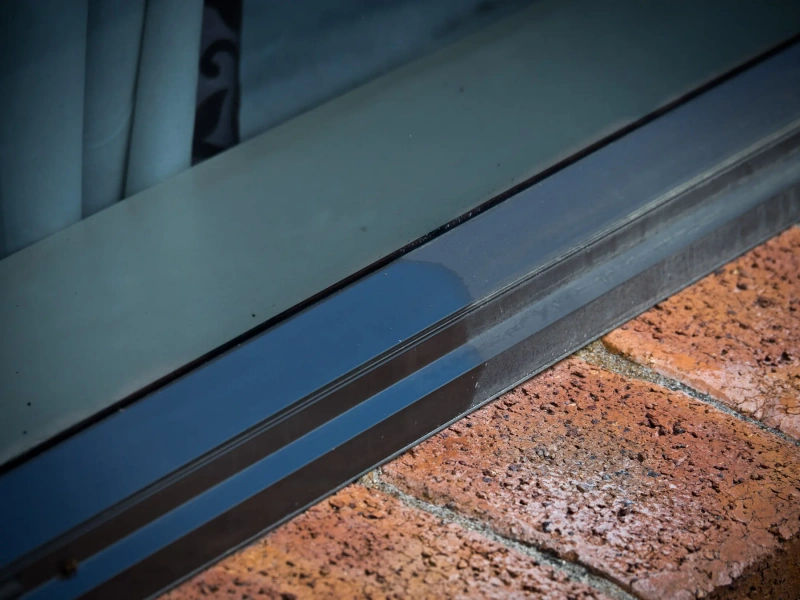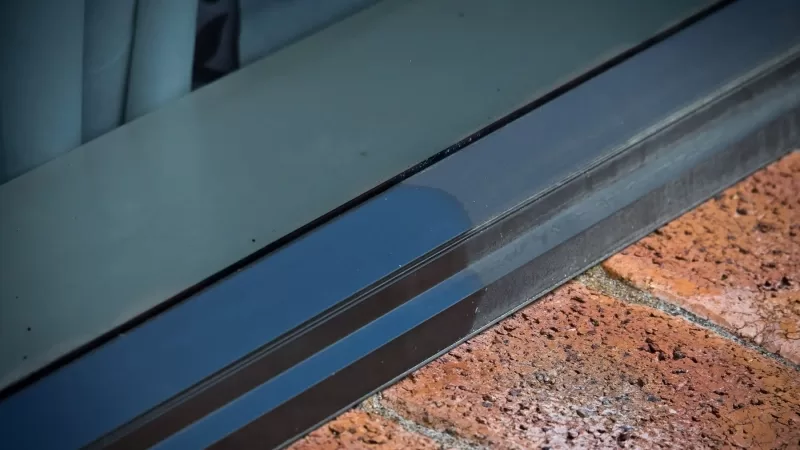Powder coated aluminium is a popular choice for many products, from outdoor furniture and window frames to automotive parts and architectural elements. This is because it offers a durable, attractive, and long-lasting finish that resists chipping, scratching, and fading better than traditional paint.

How to Restore Powder Coated Aluminium: Step-by-Step Guide
Restoring faded or dull powder coated aluminium involves cleaning, polishing, and applying protective coatings. Here’s how to do it:
1. Clean the Surface
Start with a gentle cleaning to remove dirt, grease, and oxidation.
- Use mild soap or detergent mixed with warm water.
- Apply the solution using a soft sponge or cloth.
- Avoid using abrasive pads or harsh chemicals.
- Rinse thoroughly with clean water and let it dry.
2. Remove Oxidation or Chalking
If you notice a white, chalky residue:
- Use a non-abrasive aluminium cleaner or polish.
- Rub gently in circular motion using a microfiber cloth.
- Wipe clean and check the surface for improvement.
3. Apply Restorer or Polishing Compound
To bring back gloss or shine:
- Use a metal polish suitable for powder coated surfaces.
- Alternatively, use a restoration cream designed for outdoor aluminium.
- Apply in a small section, then buff with a clean cloth.
4. Apply Protective Coating
To maintain the restored look and prevent future fading:
- Use a clear coat sealant or ceramic coating for powder coated aluminium.
- These coatings protect from UV rays and pollution.
- Reapply every 6–12 months depending on exposure.
Common Issues Affecting Powder Coated Aluminium
Before diving into how to restore powder coated aluminium, it’s helpful to understand the common problems you might encounter. Different issues require different approaches.
- Fading and Chalking: This is perhaps the most common problem, especially for items exposed to direct sunlight and harsh weather. The surface can become dull, lose its vibrant color, and develop a powdery, chalky residue when touched. This is often due to UV degradation.
- Scratches and Scuffs: Daily use can lead to minor scratches or scuffs. While powder coating is scratch-resistant, it’s not scratch-proof. Deeper scratches might expose the bare aluminium underneath.
- Dirt and Grime Buildup: Over time, dirt, dust, and environmental pollutants can stick to the surface, making it look dirty and dull. Regular cleaning can prevent severe buildup.
- Chemical Stains: Exposure to harsh cleaning agents or corrosive chemicals can damage the finish, leading to discoloration or etching.
Why Restore Powder Coated Aluminium?
Restoring your powder coated aluminium items offers several benefits:
- Extends Lifespan: Proper restoration and maintenance can significantly prolong the life of the powder coating, protecting the underlying aluminium from corrosion and further damage.
- Enhances Aesthetics: A faded or scratched surface can make an otherwise good item look old and neglected. Restoring it brings back its original luster and appeal.
- Protects Your Investment: Whether it’s expensive outdoor furniture, car parts, or architectural components, restoring them is much more cost-effective than replacing them.
- Maintains Value: For items like vehicles or specialized equipment, a well-maintained finish can help retain their resale value.
Tools and Materials Needed to Restore Powder Coated Aluminium
Having the right tools and materials is crucial for effective powder coated aluminium restoration.
- Mild Cleaning Solution: A gentle, non-abrasive soap (like dish soap) or a specialized cleaner for powder coating.
- Soft Cloths or Microfiber Towels: For cleaning and drying.
- Soft-Bristle Brush or Sponge: To help remove stubborn dirt.
- Water: For rinsing.
- Powder Coat Restorer/Rejuvenator: Products specifically designed to address fading and chalking on powder-coated surfaces. These often contain mild abrasives or chemical agents to remove the oxidized layer.
- Polishing Compound (Optional): A fine polishing compound, suitable for clear coats or automotive finishes, can sometimes be used on light scratches or to enhance gloss after restoration. Test in an inconspicuous area first.
- Touch-Up Paint (Optional): If there are deep scratches or chips, you might need a color-matched touch-up paint specifically formulated for powder coating.
- High-Quality Wax or Sealant: To protect the restored surface from future damage and UV rays.
- Fine-Grit Sandpaper (Optional, for severe deep scratches/chips only): Very fine grits (e.g., 800-grit to 2000-grit) for carefully smoothing edges of deep damage before touch-up. Use with extreme caution.
- Safety Gear: Gloves and eye protection.
Step-by-Step Guide: How to Restore Powder Coated Aluminium
Follow these steps carefully to achieve the best results when you restore powder coated aluminium.
Step 1: Thorough Cleaning
This is the most critical first step for any restoration. A clean surface ensures that restoration products can work effectively and prevents scratching the finish with trapped dirt.
- Remove Loose Debris: Brush off any loose dirt, leaves, or dust from the surface.
- Wash the Surface: Mix a mild cleaning solution (e.g., a few drops of dish soap in warm water). Using a soft cloth or sponge, gently wash the entire powder coated aluminium surface. For stubborn grime, you might need a soft-bristle brush, but avoid abrasive scrubbers.
- Rinse Thoroughly: Rinse the surface completely with clean water to remove all soap residue. Any leftover soap can cause streaking or hinder the next steps.
- Dry Completely: Use a clean, dry microfiber towel to dry the surface. Allow it to air dry completely, especially in crevices, before proceeding.
Step 2: Assess the Damage
Once clean, carefully inspect the powder coated aluminium surface to determine the type and severity of the damage. This will guide your next steps.
- Light Fading/Chalking: The surface feels powdery and looks dull, but there are no deep scratches.
- Minor Scratches: Shallow lines are visible but don’t seem to go through the coating.
- Deep Scratches/Chips: The scratch is deep enough to see the underlying aluminium or there’s a visible chip in the coating.
Step 3: Addressing Fading and Chalking
This step focuses on restoring the color and shine to dull or chalky powder coat.
- Apply Powder Coat Restorer: Following the product instructions, apply a small amount of a specialized powder coat restorer or rejuvenator to a clean, soft cloth.
- Work in Small Sections: Rub the product onto the faded or chalky area in small, circular motions. You’ll often see the chalky residue transferring to your cloth.
- Buff Away Residue: Use a separate clean, dry microfiber cloth to buff off any residue, revealing the restored finish underneath.
- Repeat if Necessary: For heavily faded areas, you might need to repeat this process several times until the desired gloss and color are achieved.
Step 4: Repairing Scratches and Chips
This requires a more delicate approach, especially for deep damage.
- For Minor Scratches: If the scratches are very shallow and haven’t gone through the powder coating, sometimes the powder coat restorer or a very fine polishing compound (designed for clear coats) can help minimize their appearance. Apply with a soft cloth and buff gently. Test in an inconspicuous area first.
- For Deep Scratches or Chips:
- Clean the Area: Ensure the chipped or scratched area is perfectly clean and dry.
- Light Sanding (Optional & Cautious): For very rough edges around a chip, you might very carefully use extremely fine-grit sandpaper (e.g., 1500-2000 grit) moistened with water to gently smooth the edges. The goal is to feather the edges, not to remove more coating. This step is often unnecessary and should only be done if you are confident.
- Apply Touch-Up Paint: Use a brush or applicator to apply a thin layer of color-matched powder coat touch-up paint directly into the scratch or chip. Do not overapply.
- Allow to Dry: Let the touch-up paint dry completely according to the manufacturer’s instructions. Multiple thin coats might be better than one thick one.
- Gentle Buffing (Optional): Once fully dry, a very gentle buff with a clean cloth might help blend the touch-up, but be careful not to remove the new paint.
Step 5: Protecting the Restored Surface
After you restore powder coated aluminium, protecting it is essential to maintain the results and prevent future damage.
- Apply Wax or Sealant: Once the surface is clean, restored, and any touch-ups are dry, apply a high-quality automotive wax or a specialized sealant for painted/coated surfaces. Follow the product instructions for application and buffing.
- UV Protection: Many waxes and sealants offer UV protection, which is crucial for preventing future fading and chalking, especially for outdoor items.
Maintenance Tips for Powder Coated Aluminium
Regular maintenance is key to minimizing the need for extensive powder coated aluminium restoration.
- Regular Cleaning: Wash your powder coated aluminium items periodically with mild soap and water to remove dirt and grime buildup.
- Avoid Harsh Cleaners: Never use abrasive cleaners, steel wool, or strong chemicals (like bleach or paint thinners) on powder-coated surfaces, as they can damage the finish.
- Reapply Protection: Reapply wax or sealant every 6-12 months, or as recommended by the product manufacturer, especially for outdoor items.
- Address Minor Issues Promptly: Don’t wait for damage to worsen. Address minor scratches or fading as soon as they appear.
When to Call a Professional
While many powder coat restoration tasks can be done yourself, there are times when it’s best to consult a professional:
- Extensive Damage: If there’s widespread peeling, bubbling, or severe corrosion beneath the coating.
- Large Surface Areas: Restoring very large items or architectural elements can be time-consuming and require specialized equipment.
- If Unsure: If you’re not confident in performing the restoration yourself or fear causing further damage.
- Specialized Equipment: For truly worn-out powder coats, sandblasting and re-powder coating might be the only solution, which requires professional equipment.
Conclusion
Knowing how to restore powder coated aluminium is a valuable skill that can save you money and keep your items looking their best. By following a systematic approach of cleaning, addressing specific damage, and protecting the surface, you can effectively rejuvenate faded, chalky, or scratched powder coated aluminium items. Regular maintenance is crucial to extend the life of the finish and minimize the need for future restorations. With a little effort, your powder-coated items can continue to look great for many years to come.
